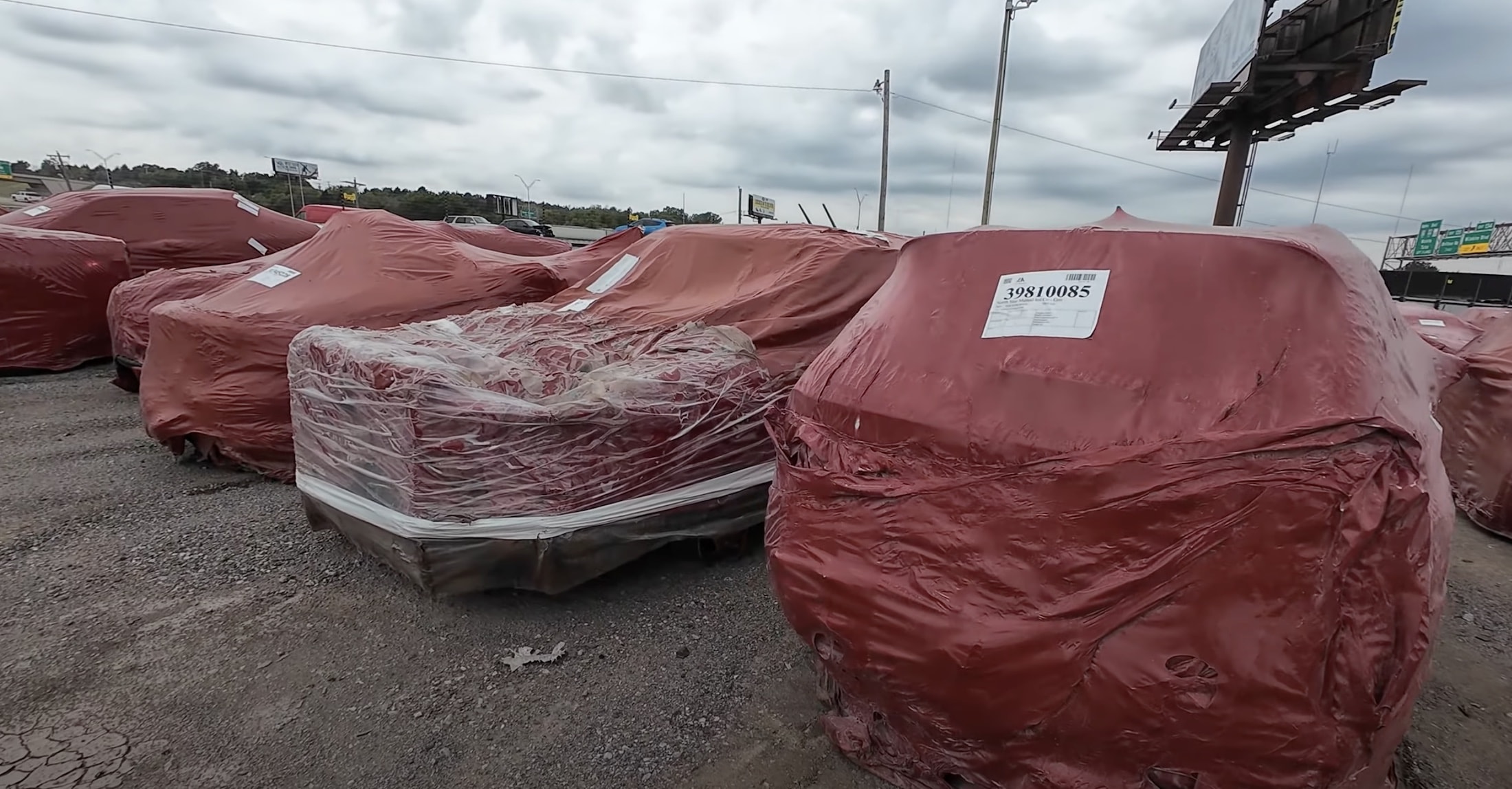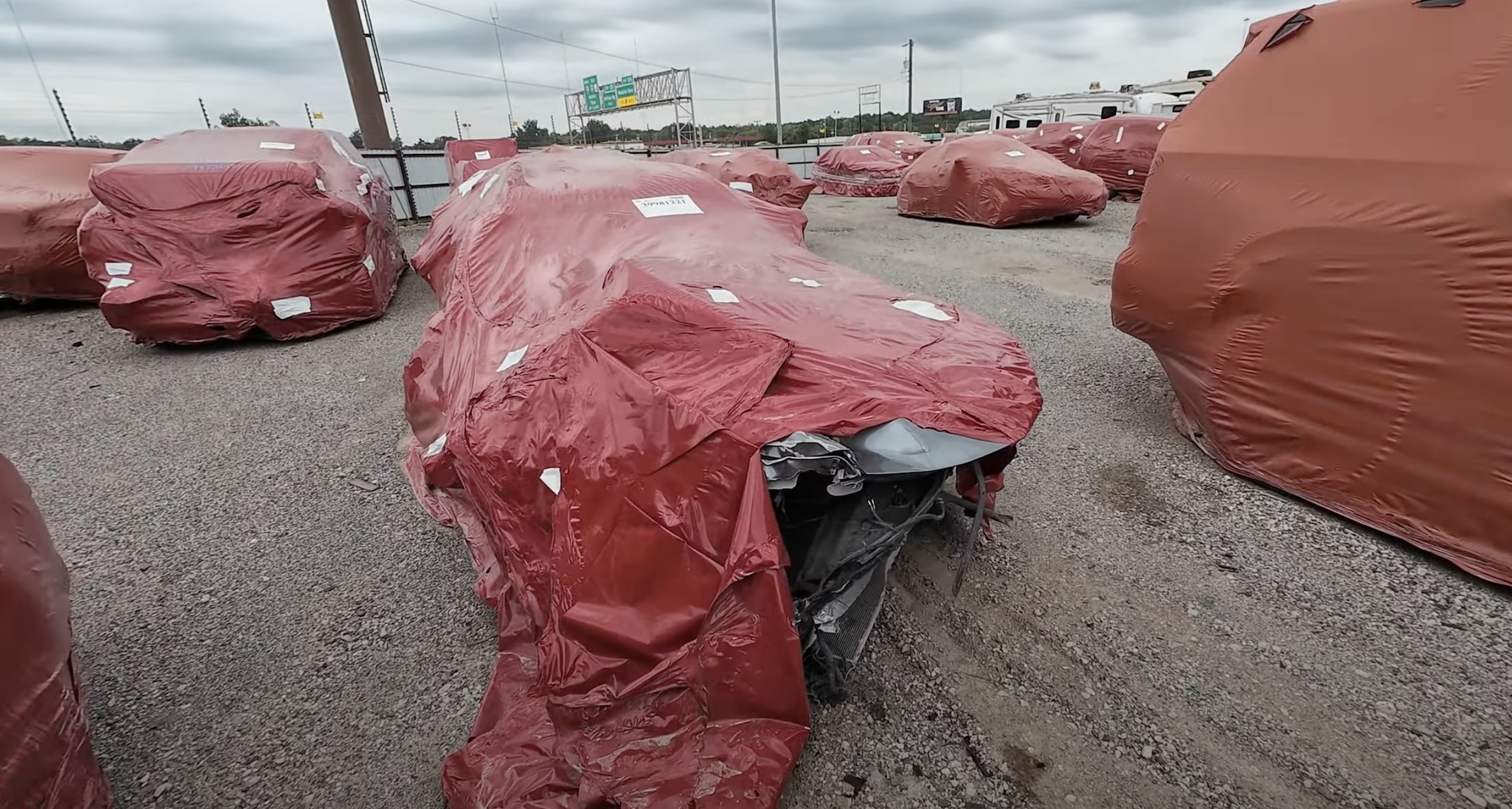The Insurance Auto Auctions yard is a desolate expanse filled with the remnants of vehicles. Among the twisted metal and shattered glass, some cars are shrouded in a crimson cocoon of red plastic. These “mummified” vehicles, once identifiable as compacts, SUVs, or pickups, now bear the scars of severe accidents.
Their shapes, distorted and irregular, hint at the extent of their damage. Even without the plastic, identifying the make and model would be a daunting task, as many are reduced to mere shells. The deteriorating plastic and duct tape holding it together reveal the cars’ prolonged residence in the yard. Each vehicle, labeled and numbered, awaits its fate, its history buried beneath the red shroud.

The red plastic, known as shrink wrap, serves as a protective layer, shielding the damaged vehicles from the elements. However, over time, the plastic can become brittle and deteriorate, exposing the underlying wreckage. The duct tape, applied to hold the plastic together, further betrays the passage of time. The presence of duct tape suggests that the vehicles have been in the yard for a significant period, their once vibrant lives reduced to a state of neglect.
Each vehicle in the yard has a unique story, a tale of a collision, a crash, or a mishap that brought it to this desolate place. The red plastic shroud serves as a silent witness to these events, a testament to the destructive power of accidents. As the vehicles sit in the yard, their identities obscured by the plastic, they await their final chapter, whether it be recycling, salvage, or simply a forgotten relic of the automotive world.
Beneath that red plastic wrap lies a trove of digital evidence, a silent witness to the accident. Wrecked cars, often involved in collisions, are brought to these yards for storage and inspection. Insurance companies evaluate the damage, while investigators the vehicle’s black box, a small electronic device that records crucial data.

These black boxes, installed in many modern vehicles, capture information such as the vehicle’s speed, throttle position, brake application, airbag deployment, seatbelt use, and steering angle, both before and after the crash.
The data collected from these devices provides valuable insights into the circumstances surrounding the accident, aiding in investigations and potential legal proceedings.

